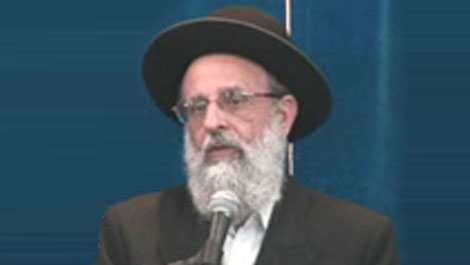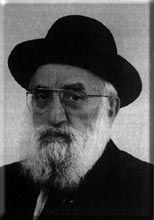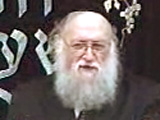Beit Midrash
- Torah Portion and Tanach
- Vayikra
- Emor
- Sections
- Covenant & Conversation
Time plays an enormous part in Judaism. The first thing God declared holy was a day: Shabbat, at the conclusion of creation.
The first mitzvah given to the Jewish people as a whole, prior to the Exodus, was the command to sanctify time, by determining and applying the Jewish calendar (Ex. 12:1-2).
The prophets were the first people in history to see God in history, seeing time itself as the arena of the Divine-human encounter. Virtually every other religion and civilisation before and since has identified God, reality and truth with timelessness.
Isaiah Berlin used to quote Alexander Herzen who said about the Slavs that they had no history, only geography. The Jews, he said, had the reverse: a great deal of history but all too little geography. Much time, but little space.
So time in Judaism is an essential medium of the spiritual life. But there is one feature of the Jewish approach to time that has received less attention than it should: the duality that runs through its entire temporal structure.
Take, for instance, the calendar as a whole. Christianity uses a solar calendar, Islam a lunar one. Judaism uses both. We count time both by the monthly cycle of the moon and the seasonal cycle of the sun.
Then consider the day. Days normally have one identifiable beginning, whether this is at nightfall or daybreak or – as in the West – somewhere between. For calendar purposes, the Jewish day begins at nightfall ("And it was evening and it was morning, one day"). But if we look at the structure of the prayers – the morning prayer instituted by Abraham, afternoon by Isaac, evening by Jacob – there is a sense in which the worship of the day starts in the morning, not the night before.
Years, too, usually have one fixed beginning – the "new year". In Judaism, according to the Mishnah (Rosh Hashanah 1:1), there are no less than four new years. The first of Elul is the new year for the tithing of animals. The fifteenth of Shevat (the first according to Bet Shammai) is the new year for trees. These are specific and subsidiary dates, but the other two are more fundamental.
According to the Torah, the first month of the year is Nissan. This was the day the earth became dry after the Flood (Gen. 8:13). It was the day the Israelites received their first command as a people (Ex. 12:2). One year later it was the day the Tabernacle was dedicated and the service of the priests inaugurated (Ex. 40:2). But the festival we call the New Year, Rosh Hashanah, falls six months later.
Holy time itself comes in two forms, as Emor makes clear. There is Shabbat and there are the festivals, and the two are announced separately. Shabbat was sanctified by God at the beginning of time for all time. The festivals are sanctified by the Jewish people to whom was given the authority and responsibility for fixing the calendar.
Hence the difference in the blessings we say. On Shabbat we praise God who "sanctifies Shabbat". On the festivals we praise God who sanctifies "Israel and the holy times" – meaning, it is God who sanctifies Israel but Israel who sanctify the holy times, determining on which days the festivals fall.
Even within the festivals there is a dual cycle. One is formed by the three pilgrimage festivals: Pesach, Shavuot and Sukkot. These are days that represent the key historic moments at the dawn of Jewish time – the Exodus, the giving of the Torah, and the forty years of desert wandering. They are festivals of history.
The other is formed by the number seven and the concept of holiness: the seventh day, Shabbat; the seventh month, Tishrei, with its three festivals of Rosh Hashanah, Yom Kippur and Sukkot; the seventh year, Shemittah; and the Jubilee marking the completion of seven seven-year cycles.
These times (with the exception of Sukkot that belongs to both cycles) have less to do with history than with what, for want of a better word, we might call metaphysics and jurisprudence, ultimate truths about the universe, the human condition, and the laws, both natural and moral, under which we live.
Each is about creation (Shabbat, a reminder of it, Rosh Hashanah the anniversary of it), divine sovereignty, justice and judgment, together with the human condition of life, death, mortality. So on Yom Kippur we face justice and judgment. On Sukkot/Shmini Atzeret we pray for rain, celebrate nature (the arba minim, lulav, etrog, hadassim and aravot, are the only mitzvah we do with unprocessed natural objects), and read the book of Kohelet, Tanakh’s most profound meditation on mortality.
To engage further with Rabbi Sacks’s teachings, or to sign up to his mailing list, please go to www.rabbisacks.org

Days of Re-establishment – How We Come Before Him in Praise – part I
Rabbi Yossef Carmel | 4 Iyar 5784

Holy-istic holiness
Rabbi Stewart Weiss | Iyar 5783

What constitutes chilul hashem, & kiddush hashem?
Rabbi Stewart Weiss | Iyar 5783























